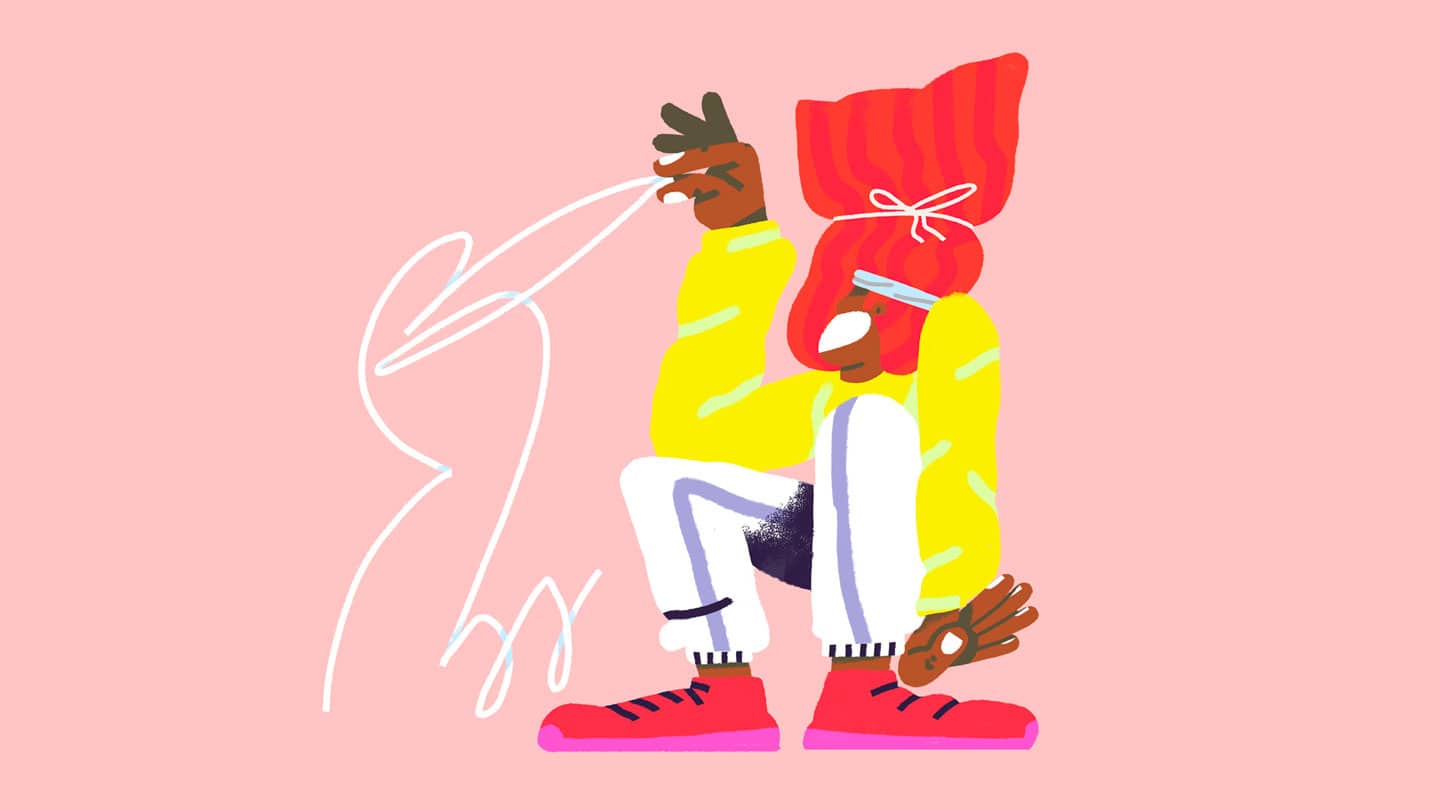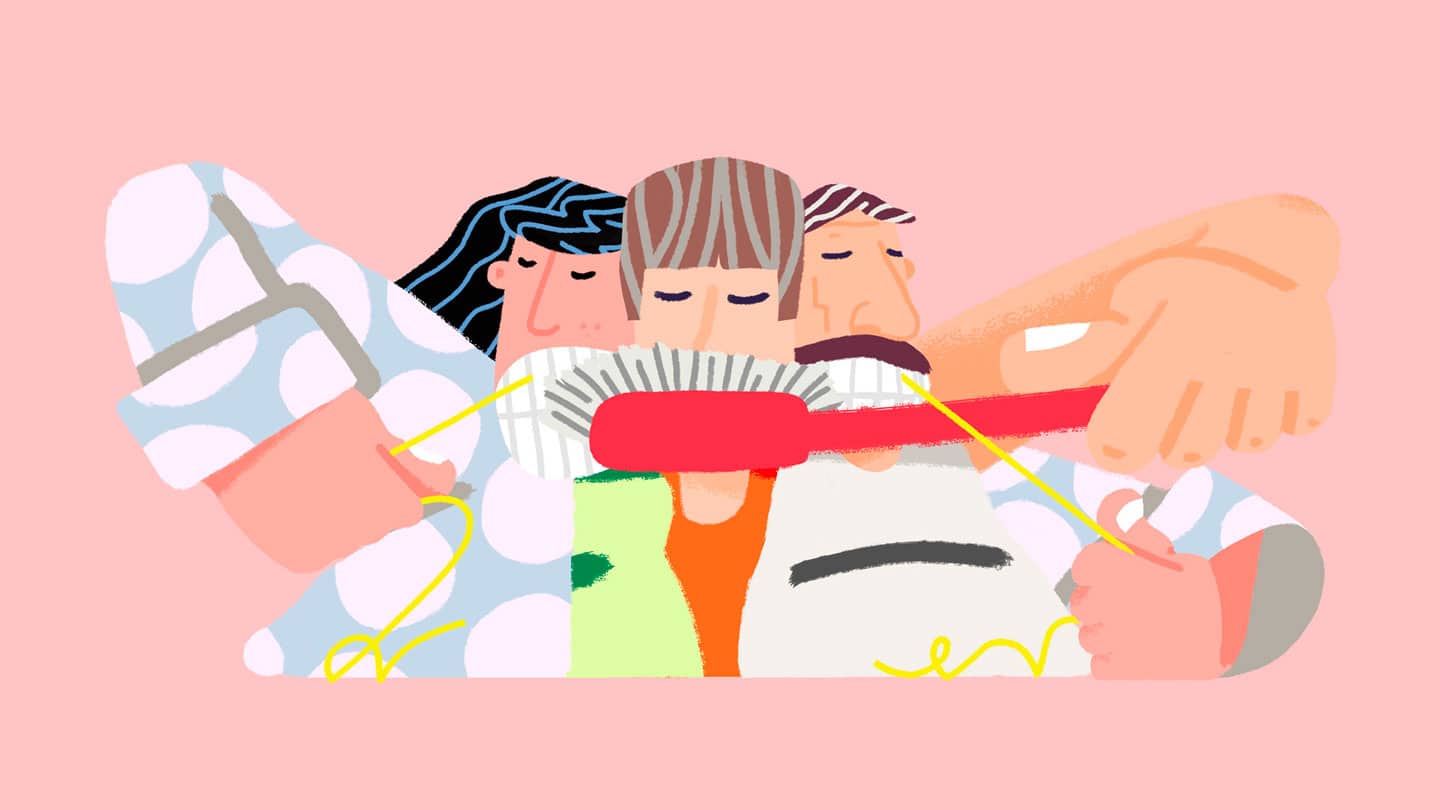Brushing your teeth is the key to a healthy mouth and a great smile. We all know it’s important – all those PSAs have paid off – but you might still have some questions. What does “brushing effectively” mean? How many times a day do you need to brush your teeth? How long should you brush? What’s the best technique? Clinique Hygiène Dentaire has created a comprehensive guide to great brushing.
Brushing your teeth: the basics
- You should brush your teeth three times a day using a soft-bristled toothbrush, for three minutes each time.
- You need to brush each quadrant, in other words each section of your mouth, for about 45 seconds.
- Dental cleanings can’t replace regular brushing.
- Use an electric toothbrush for the best results.
What does “brushing effectively” mean?
We recommend brushing your teeth three times a day using a soft-bristled toothbrush, for three minutes each time.
Brushing is one way of eliminating dental plaque and buildup. You can eliminate even more plaque by cleaning between your teeth with dental floss, interdental brushes, or toothpicks and by using mouthwash or tongue scrapers.
While there’s no one right way to brush your teeth, there are a few key rules that apply to everyone.
How often should you brush your teeth?
You should brush three times a day, once after each meal. And ideally you should wait 10 minutes after eating to brush.
That leaves time for the level of acidity in your mouth to drop from its post-meal high so you aren’t combining high acid levels with abrasion from your brush, which could potentially cause damage.
What’s the best brushing technique?
There’s no such thing as a perfect universal brushing technique. The right technique depends on your age, your dexterity, the condition of your gums, how well your teeth are aligned, and even your motivation.
For example, a 6-year-old won’t need to brush using the same techniques as a 45-year-old smoker with diabetes or a senior who is missing a dozen teeth.
The basic rules
- Brush your top and bottom teeth separately, never both at the same time. In fact you actually need to brush one quadrant – the teeth on the top or bottom of one side of your mouth – at a time.
- Be sure to brush the entire surface of each tooth, right up to the gum line.
- You also need to gently brush your gums where they meet your teeth.
- Apply a moderate amount of pressure.
- The best way to angle and move your brush depends on your mouth’s individual needs. Only your hygienist can tell you what’s right for your teeth.
- But we can still recommend one of the most popular brushing techniques: hold the brush at a 45 degree angle on your gum line, then sweep it gently back and forth. End with a downward stroke when brushing the top and an upward stroke when brushing the bottom. And make sure your movements match the size of your teeth!
How long should you brush your teeth?
You should spend about 45 seconds on each quadrant (top left, top right, bottom left, bottom right). That adds up to a total of about 3 minutes.
What kind of toothbrush is best?
Just like there’s no universal brushing technique, the right toothbrush is very personal. As a general rule, we recommend:
- Soft or extra-soft brushes only. Never use a firm brush, it can damage your gums. If you feel like a softer brush is less effective, talk to your hygienist about how to improve your technique.
- A new toothbrush about every 3 months, depending on how much pressure you use.
And all the research agrees that electric toothbrushes are the most effective choice for everyone.
At CHD, we believe it’s important to find the right personalized brushing methods and interdental care options for all our patients. We also have a demonstration area available so you can see our advice in practice, which is particularly helpful for kids.
Brushing your teeth: the quadrant-by-quadrant guide
Your mouth can be divided into four quadrants: top right, top left, bottom right, and bottom left.
Brush each one for 45 seconds. We recommend keeping track with a watch or egg timer.
Each section requires a different approach:
- Start with the inside and outside surfaces.
- Hold the brush at a 45 degree angle on your gum line, then move it gently towards the tooth as if you were painting a wall. And don’t forget the back of the last tooth!
- Now you’re ready to brush the chewing surfaces.
- Hold the brush flat as you work on them.
- Once you reach the inner surfaces of your front teeth, hold your toothbrush vertically to clean them with the brush tip.
- Then brush your tongue from back to front to get rid of the food residue and bacteria that are the culprits behind bad breath.
FAQ
Can dental cleanings replace toothbrushing?
Absolutely not! While cleanings remove tartar and plaque buildup, they are just a maintenance procedure. Good at-home care is essential for dental cleanings to be effective.
If you don’t brush regularly, you run the risk of all kinds of dental problems, from cavities to abscesses, gum disease, and more.
Can I skip cleanings if I brush well at home?
It’s true that if you brush effectively you won’t need cleanings as often. But even if you have healthy teeth, we recommend a cleaning every 9 to 12 months.
What can I do besides brushing to keep my mouth in great shape?
There are lots of options for enhanced at-home care. They include dental floss, mouthwash, and electric toothbrushes.
Store shelves are crammed with products that make big promises but don’t offer any guarantees, so we recommend getting an expert opinion from your dental hygienist.



